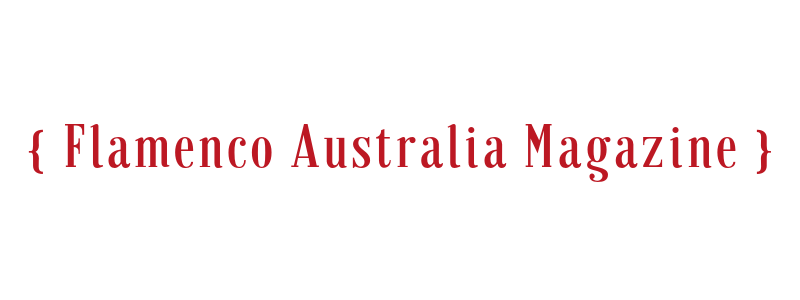Contemporary Spanish Dance Theatre
Danza Viva Spanish Dance Company
Traditionally and historically, Spanish dance has had a high profile in the overall dance kaleidoscope of Europe and America.
Danza Viva Spanish Dance
Juan Carlos 1978
Antonio Gades Flamenco
Maya Plisetskaya
Danza Viva Spanish Dance
AFTER Romantic ballerina Fanny Elssler enchanted audiences with her interpretation of the Cachucha (which she learned from Dolores Serral, the model for Manet’s famous painting), Marius Petipa and August Bournonville included Spanish-style pieces in their choreographies. No less significantly, since Diaghilev’s Ballet Russe mounted the first production of "The Three Cornered Hat" with choreography by Leonide Massine to the musical score of the same name by Manuel de Falla in 1929 - with sets and costumes designed by Picasso - very strong artistic threads have connected Spanish dance with classical ballet, albeit more outside of Spain than in, as well, in our era, with contemporary dance in Spain itself.Under the stifling dictatorship of Francisco Franco, the arts and culture of Spain were primarily bullfights, football, and flamenco. A reactionary attitude to such matters ensured that there were neither classical nor modern dance in Spain under his regime. In the first year of the Spanish Civil War, Franco’s forces shot and killed sublime poet and dramatist Federico Garcia Lorca who lies in an unmarked grave.The women’s political arm of Franco’s party, the Spanish Falange, was the Seccion Femenina, charged, amongst much else, with running regional centres with special focus on the food, folk customs, dance and music of the various regions of Spain. Founded in June 1934, these centres became important sources for investigating, maintaining and preserving the folk dance and music traditions of Spain.During these middle decades of the 20th century, it was very easy for foreign dancers to enter Spanish Dance companies, even dancers with little training! There were many companies but not enough Spanish-born dancers who were willing to work under the appalling conditions and poor pay that were offered during those years.Franco had declared Juan Carlos (grandson of Alfonso X111 who went into exile in 1931) his successor. When Franco died in November 1975 and Juan Carlos ascended the throne, there were sweeping social, political and economic changes that had an enormous impact on the history and development of the dance in Spain. King Juan Carlos presided over the change from dictatorship to parliamentary democracy.In 1978, the late Antonio Gades was asked to establish the Ballet Nacional Espanol, the first government-subsidised company of its kind in Spain, focusing on traditional and contemporary Spanish dance theatre. A year later, Victor Ullate was asked to found the Ballet Nacional Classico specialising in classical ballet. Ullate started his professional dance career in the company of the great Antonio Ruiz, and then went on to join Maurice Bejart’s company as a principal dancer three years later.In 1983, Ullate left to form his own company and school – and his place was taken by Maria de Avila, who brought the works of Balanchine and Tudor to Spain for the first time.In 1987, Maya Plisetskaya, that legendary Bolshoi ballerina, took over the Ballet Nacional Classico, while Jose Antonio became artistic director of the Ballet Nacional Espanol for the first time from 1986 to 1992. (He is currently enjoying his second stint as director after a break of some 12 years).Under his direction, Spanish ballets such as his “Laberinto” performed in Melbourne by the Ballet Nacional in 1987, and Jose Granero’s “Medea” performed at the Adelaide Festival some years ago, came into being, thus creating a landmark choreographic development for Spanish dance and the Spanish ballet. Both works drew upon flamenco, folk dance and contemporary dance to great effect.In 1990, the Ballet Nacional Clasico was taken over by its present incumbent, Nacho Duarte, who trained at the Rambert School as well as with Bejart and Alvin Ailey’s American Dance Centre where he familiarised himself with the Graham and Horton techniques and styles. At this time, the company changed its name to Compania Nacional de Danza.(Delays in getting a green card resulted in Duarte not realising his ambition to work in Ailey’s company, instead accepting a contract with Matt Eks and the Cullberg ballet. After one year with that company, Nacho Duarte was invited by Jiri Kylian to join Nederlands Dance Theatre.)Both Ullate and Duarte have combined classic and/or contemporary dance with touches of flamenco or regional Spanish dance to create a unique style that is inherently and unmistakeably Spanish.Just glancing at the star-spangled array of artistic directors that both national companies boasted since their inception, it becomes abundantly clear as to why and how the rich experience and artistic expression to which they and their dancers, were and are exposed, have impacted on modern Spanish dance in all its facets....
Deanna Blacher copyright 2010






